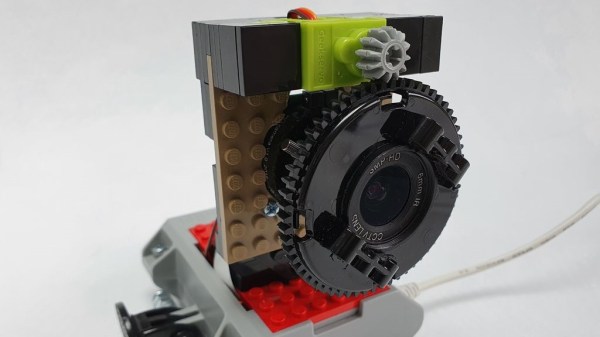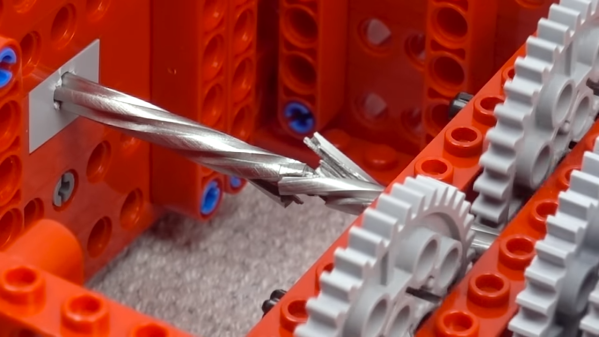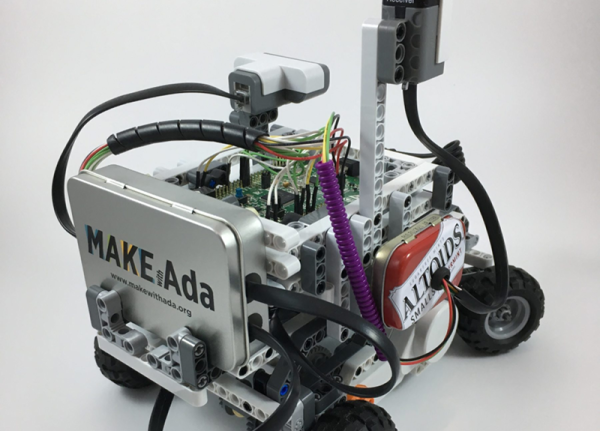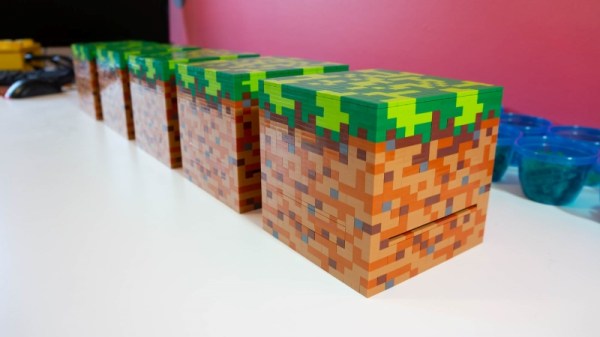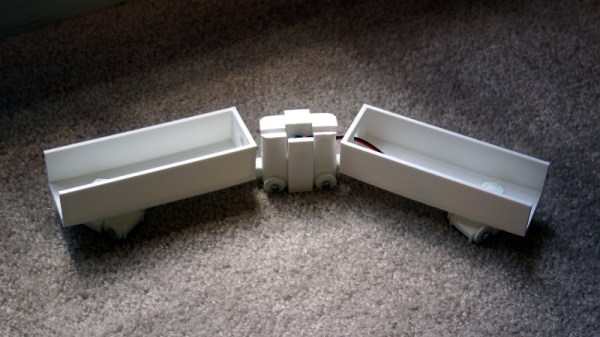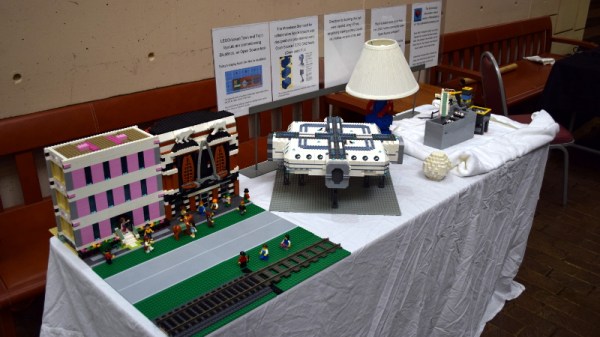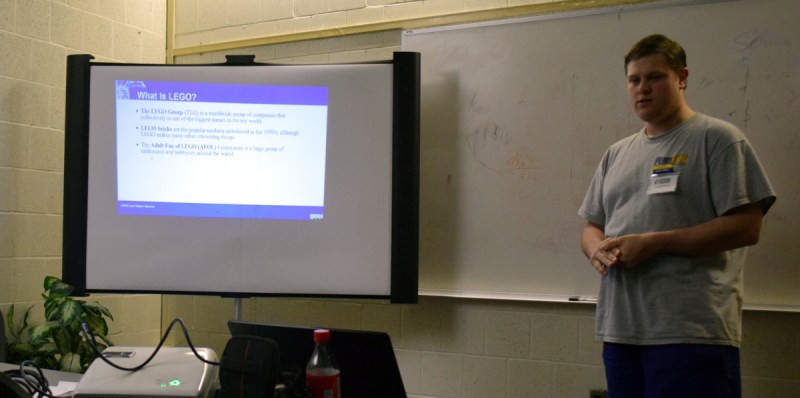Ever since the high-quality camera for the Raspberry Pi was released a few months back it has been the center of attention for many hacks. In this quick build [Martin Mander] shows us how to make a servo-powered focusing mechanism entirely from LEGO.
The inspiration for this project came to him while he was working on his 1979 Merlin Pi Camera and found that setting the focus just right is vital in order to get good quality pictures. So he set himself the goal to build a mechanism that allows him to focus the camera precisely and remotely.
It is the plethora of LEGO-compatible parts that are available off-the-shelf that make such a project possible without the use of any 3D printed components. He not only found a LEGO-compatible continuous rotating servo but also a LEGO-compatible case for the Pi, and a LEGO cogwheel which almost fits exactly onto the camera lens. He also added a tripod mount to the case that allows him to set up the camera anywhere. The camera and focussing mechanism are controlled with a custom GUI based on guizero Python 3 library and the camera can be accessed remotely via VNCViewer.
If you prefer 3D printing over LEGO there are also other stylish Raspi HQ camera builds.
Video after the break.
Continue reading “Bringing The Pi Camera Into Focus With LEGO”

